Aidas Black Sound-Red Heart Phono Cartridge
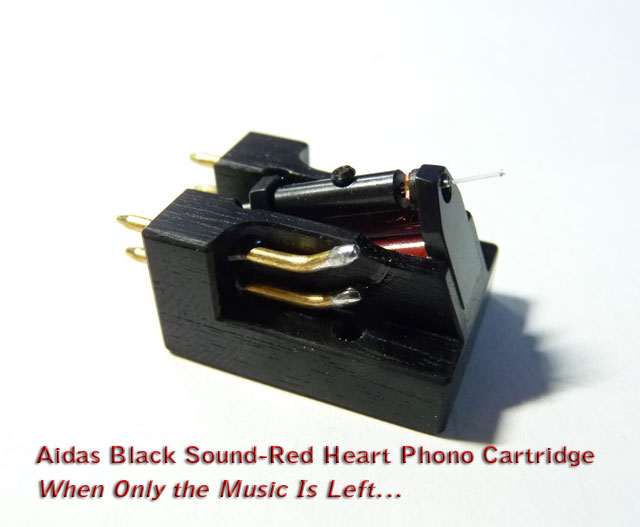
 You gotta love the Internet. One Friday, I’m just winding down the day, surfing the web, when I came across a link to a website called ViRaHighEnd.com. I clicked on the link and began to read about the company. What got my attention is that the company’s products appear to be the result of the efforts of a group of audio industry related individuals. According to their website, ViRa High End is “… a multi-national business venture comprised of High End enthusiasts, audio engineers and audio professionals from the USA, Switzerland, Lithuania, Russia and Japan. All founders of Vira High End have been in Audio business for 30-40 years.” I was genuinely intrigued, thinking about what a gathering of these diverse people could produce. Thus far, their focus has been on a line of moving coil phono cartridges called Aidas and tonearms called ViRa the Radiant Tangent (RT-3 and RT-4).
You gotta love the Internet. One Friday, I’m just winding down the day, surfing the web, when I came across a link to a website called ViRaHighEnd.com. I clicked on the link and began to read about the company. What got my attention is that the company’s products appear to be the result of the efforts of a group of audio industry related individuals. According to their website, ViRa High End is “… a multi-national business venture comprised of High End enthusiasts, audio engineers and audio professionals from the USA, Switzerland, Lithuania, Russia and Japan. All founders of Vira High End have been in Audio business for 30-40 years.” I was genuinely intrigued, thinking about what a gathering of these diverse people could produce. Thus far, their focus has been on a line of moving coil phono cartridges called Aidas and tonearms called ViRa the Radiant Tangent (RT-3 and RT-4).
So, I called and talked with a gentleman named Victor Simakov, the owner and US distributor of ViRa USA in Tehachapi, CA. I told him I was interested in reviewing one of their cartridges and explained to him what was in my current reference system and in particular, my analog setup (George Warren turntable, Abis SA-1.2 arm and Benz Micro Ace-L cartridge) and asked him to send me his recommendation for a cartridge, since I didn’t know anything about the Aidas cartridges, which are ViRa High End’s cartridge line. A few days later, I received an email from Victor saying that the Aidas Black Sound-Red Heart cartridge was on its way.
The Black Sound-Red Heart Cartridge
When the Black Sound-Red Heart arrived, it came in a neatly packed little cardboard box filled Styrofoam packing. Inside was a small jewelry-sized box made out of a nice-looking cherry-stained wood with a brass fastener. Inside the wood box the cartridge is held in place by two screws. There was also a piece of paper inside with the cartridge’s specs and the mounting hardware.
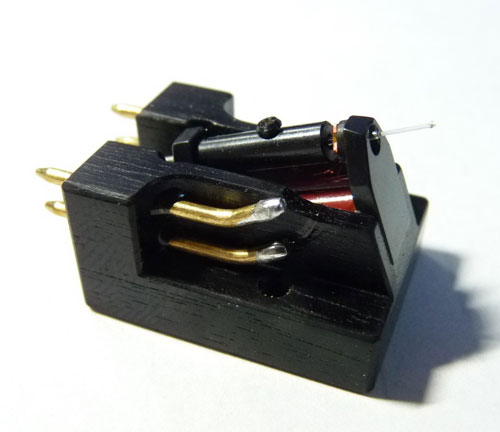
 There are three different cartridges in the Aidas cartridge line and all have bodies that are made from exotic woods. The Black Sound-Red Heart is made from Indian Ebony wood, a highly dense wood that has a smooth finish and is often used in furniture and fine instrument making. The construction of this moving coil cartridge is a thing of beauty and is something that I would expect to see from the likes of Jeff Rowland or Dan D’Agostino (but with a more mortgage-friendly price tag). The Indian Ebony wood body is so well sculpted that it almost looks like it’s made of a synthetic material rather than a natural one. It uses a superfine nude polished Micro Ridge stylus and a Sapphire/Diamond cantilever. The wires coming from the coils look to be run through neatly soldered brass conduits, which run to the output pins. It’s a sleek, neat and yet robust looking cartridge, save for the delicate looking Sapphire/Diamond cantilever. I was in constant fear of shearing that thing off. Maybe ViRa High End will consider adding a stylus guard in the future.
There are three different cartridges in the Aidas cartridge line and all have bodies that are made from exotic woods. The Black Sound-Red Heart is made from Indian Ebony wood, a highly dense wood that has a smooth finish and is often used in furniture and fine instrument making. The construction of this moving coil cartridge is a thing of beauty and is something that I would expect to see from the likes of Jeff Rowland or Dan D’Agostino (but with a more mortgage-friendly price tag). The Indian Ebony wood body is so well sculpted that it almost looks like it’s made of a synthetic material rather than a natural one. It uses a superfine nude polished Micro Ridge stylus and a Sapphire/Diamond cantilever. The wires coming from the coils look to be run through neatly soldered brass conduits, which run to the output pins. It’s a sleek, neat and yet robust looking cartridge, save for the delicate looking Sapphire/Diamond cantilever. I was in constant fear of shearing that thing off. Maybe ViRa High End will consider adding a stylus guard in the future.
System Setup
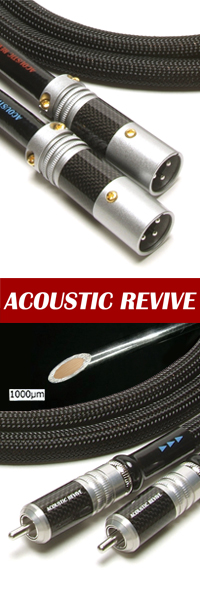 My reference system has been anchored by my Maggie MG20s being driven by two pairs of Bel Canto mono amps (M300s for the tweeter/midrange. REF1000Ms for the bass). My main digital sources are the Laufer Teknik Memory Player Mini and a OPPO DV980H Universal Disc Player. Both units feed a Vitus Audio RD-101 DAC/linestage.
My reference system has been anchored by my Maggie MG20s being driven by two pairs of Bel Canto mono amps (M300s for the tweeter/midrange. REF1000Ms for the bass). My main digital sources are the Laufer Teknik Memory Player Mini and a OPPO DV980H Universal Disc Player. Both units feed a Vitus Audio RD-101 DAC/linestage.
But my vinyl rig has been in a state of transition over the past few months, so the Aidas cartridge arrived just in time for me to try it in a couple of configurations. My longtime favorite table has been the excellent George Warren turntable fitted with the awesome Abis (now Sorane) SA-1.2 tonearm and a Benz Micro Ace-L low output moving coil. But I also have in for review the gorgeous and shockingly affordable Small Audio Manufacture (S.A.M.) Aldebaran turntable and Calista tonearm.
A few trials and tribulations popped up while getting the Aldebaran in place so my initial listening was done with the Black Sound-Red Heart mounted on the George Warren/Abis setup. Unfortunately, some unforeseen travel at my real job prevented me from being able to listen much to this setup for more than a few brief weekend sessions, and what I heard I wasn’t really able to get into. So, after only a few unremarkable days of experimenting, I decided that putting the cartridge in the best possible setup meant using it with the Aldebaran and Abis SA-1.2 tonearm. The Abis is a rather high mass tonearm that you can add or remove weights to to accommodate a variety of cartridges, even a relatively high compliance cartridge like the Black Sound-Red Heart. Needless to say, it took quite a bit of effort to get it dialed in just right. I spent the better part of an evening adjusting the counterweight and auxiliary weight and tonearm height and tracking force until I was perfectly satisfied with the results. Finally, at about 11:00 o’clock at night I was able to do some serious listening. And let me tell you folks, when you put the effort into setting up a vinyl rig with a top-notch cartridge, the results can be transformative.
Music, Please…
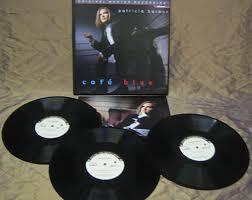 After spending a few days listening to almost every piece of vinyl I owned, I was ready to get into some serious listening sessions. The first album that I really got into was a HQ-180 gram, 45RPM pressing of Patricia Barber’s Café Blue [Mobile Fidelity, MFSL 3-45002]. Of course the first track I listened to was “What a Shame,” but “what a shame” was hardly the immediate response I had to what I was hearing. The Black Sound-Red Heart is a skillful groove tracker. It retrieved intricate details from this recording in a way that reminded me of why I love analog in a way that I just never got to with CD. The warmth and life of music that this cartridge renders with makes you think of the best of classic old tube amps like the early Conrad Johnson and Audio Research amps, except in this case you don’t sacrifice any low-frequency detail or stage depth. There is wonderful image specificity of the instruments on this recording, particularly on another great track, “Too Rich For My Blood.” Barber’s smoky vocals are particularly engrossing on this track, but the real fun comes from the climactic percussions. And speaking of percussions, I really loved what this cartridge did with easily my favorite track on this album, “Nardis.” Let’s face it, if you attended a CES during the 90’s you heard this track in a demo room. The percussion solo on the second half of this track is very demanding and requires a front end that can really dig deep and retrieve all of the dynamics that are packed into it. The Black Sound-Red Heart did this brilliantly.
After spending a few days listening to almost every piece of vinyl I owned, I was ready to get into some serious listening sessions. The first album that I really got into was a HQ-180 gram, 45RPM pressing of Patricia Barber’s Café Blue [Mobile Fidelity, MFSL 3-45002]. Of course the first track I listened to was “What a Shame,” but “what a shame” was hardly the immediate response I had to what I was hearing. The Black Sound-Red Heart is a skillful groove tracker. It retrieved intricate details from this recording in a way that reminded me of why I love analog in a way that I just never got to with CD. The warmth and life of music that this cartridge renders with makes you think of the best of classic old tube amps like the early Conrad Johnson and Audio Research amps, except in this case you don’t sacrifice any low-frequency detail or stage depth. There is wonderful image specificity of the instruments on this recording, particularly on another great track, “Too Rich For My Blood.” Barber’s smoky vocals are particularly engrossing on this track, but the real fun comes from the climactic percussions. And speaking of percussions, I really loved what this cartridge did with easily my favorite track on this album, “Nardis.” Let’s face it, if you attended a CES during the 90’s you heard this track in a demo room. The percussion solo on the second half of this track is very demanding and requires a front end that can really dig deep and retrieve all of the dynamics that are packed into it. The Black Sound-Red Heart did this brilliantly.
 For the next recording of note, I have to admit to having a thing for classic rock. To me, nothing says classic rock quite like the Loggins & Messina album, Full Sail [Columbia]. Now the interesting thing about this album is that while it was a moderate hit to white audiences (it got up to #10 on Billboard’s Pop charts in 1973) it produced an all-time masterpiece for urban audiences, especially those who favored “Steppers” music. The song is called, “Pathway to Glory.”
For the next recording of note, I have to admit to having a thing for classic rock. To me, nothing says classic rock quite like the Loggins & Messina album, Full Sail [Columbia]. Now the interesting thing about this album is that while it was a moderate hit to white audiences (it got up to #10 on Billboard’s Pop charts in 1973) it produced an all-time masterpiece for urban audiences, especially those who favored “Steppers” music. The song is called, “Pathway to Glory.”
For those of you who have never experienced it, “Stepping” is an ultra-cool and highly stylized version of what used to be called “Bopping.” It combines elements of different styles such as Salsa, Swing Dancing and even the Jitterbug.
The thing I love about classic rock tunes like this is that you rarely find things like synthesizers or electric drums or any other kinds of artificial elements. The drums are actual skins with real metal high-hat cymbals. You can hear multiple simultaneous stringed instruments, not because a single guitarist was multi-tracked in the studio but because there were actually multiple guitarists. In this case its Messina’s guitar and Al Garth on violin who provide one best and hardest driving rhythm passages I’ve ever heard. There is a lot of great music poured into this track and it takes a great analog front end to deliver it properly and the Black Sound-Red Heart does just that. What am I hearing? Strings that vibrate. Percussions that sound like one object has struck another. And finally, vocals that have breath. Don’t forget Kenny Loggins is the lead vocalist here and there are few singers with a more mellifluous voice. One of the strengths of this cartridge is its ability to strip away non-musical artifacts and allow you to get into the soul of the singing and music.
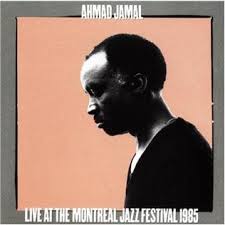 Moving on to some live music, I fired up one of my favorite albums for doing reviews, the great Ahmad Jamal’s “Yellow Fellow”, from his Live at the Montreal Jazz Festival [Atlantic] album. This track is so cool to listen to because of the way it starts with a French-speaking woman’s voice pouring from the speakers to introduce Jamal in a way that is shockingly holographic. My wife was upstairs when I put this track on and she came flying downstairs because she thought that someone was in the house talking on a mic. I got a kick out of watching her surprise to see where that voice was actually coming from. This was a demonstration of the cartridge’s prowess. The Black Sound-Red Heart’s ability to maintain groove stability allows for loads of detail to come through vividly, especially during deep passages such as the bass solo on this track by James McCormack. The cartridge renders it in a way that sounds very well defined and lifelike. I have heard many a more expensive cartridge muddy this song and lose a bit of the definition needed.
Moving on to some live music, I fired up one of my favorite albums for doing reviews, the great Ahmad Jamal’s “Yellow Fellow”, from his Live at the Montreal Jazz Festival [Atlantic] album. This track is so cool to listen to because of the way it starts with a French-speaking woman’s voice pouring from the speakers to introduce Jamal in a way that is shockingly holographic. My wife was upstairs when I put this track on and she came flying downstairs because she thought that someone was in the house talking on a mic. I got a kick out of watching her surprise to see where that voice was actually coming from. This was a demonstration of the cartridge’s prowess. The Black Sound-Red Heart’s ability to maintain groove stability allows for loads of detail to come through vividly, especially during deep passages such as the bass solo on this track by James McCormack. The cartridge renders it in a way that sounds very well defined and lifelike. I have heard many a more expensive cartridge muddy this song and lose a bit of the definition needed.
Conclusion
Though the Aidas cartridges are not that well-known in audiophile circles… yet, I am convinced that this won’t be the case for too long, they’re just too good. I don’t know what ViRa USA’s dealer network looks like or if these cartridges will only be available direct. Whatever the case, you’d be doing yourself a great favor by finding these cartridges and checking them out. If the Aidas Black Sound-Red Heart is any indicator of the quality of this line then these will be world-beaters and may be even harder to come by. I would imagine that they will become a little pricier too. But right now, this cartridge represents a bonafied bargain and is worthy of the highest recommendation I can give. I want to buy it.


dave thomas
Specifications:
Price:$1850.00
Body: Indian Ebony wood
Cantilever: Sapphire/Diamond
Stylus: Superfine Micro Ridge, Namiki/Adamant
Stylus Angle 20 degrees
Magnet system: AlniCo 5, Coils 6N OCC copper 0.04mm
Weight: 8.75g.
Tracking force: 2.3-2.5g.
Output: 0.26mV
Compliance lateral: 12um/mH
Frequency: 15-50kHz
Channel separation: >30dB
Channel balance: >1dB
Trackability: 90uM at 2.5g.
Capacitance: 56.00nF
Break-in period: 50 hours
Contact:
ViRa USA
206 Spruce St.
Tehachapi, CA 93561
USA
Tel: +1 (310) 806 2854
Email us: virausa@yahoo.com
Web:http://www.virahighend.com
Stereo Times Masthead
Publisher/Founder
Clement Perry
Editor
Dave Thomas
Senior Editors
Frank Alles, Mike Girardi, Key Kim, Russell Lichter, Terry London, Moreno Mitchell, Paul Szabady, Bill Wells, Mike Wright, Stephen Yan, and Rob Dockery
Current Contributors
David Abramson, Tim Barrall, Dave Allison, Ron Cook, Lewis Dardick, Dan Secula, Don Shaulis, Greg Simmons, Eric Teh, Greg Voth, Richard Willie, Ed Van Winkle, and Rob Dockery
Music Reviewers:
Carlos Sanchez, John Jonczyk, John Sprung and Russell Lichter
Site Management Clement Perry
Ad Designer: Martin Perry




Be the first to comment on: Aidas Black Sound-Red Heart Phono Cartridge